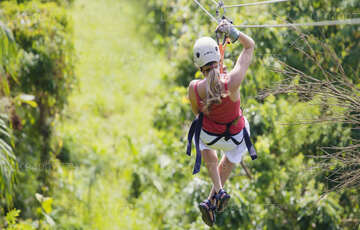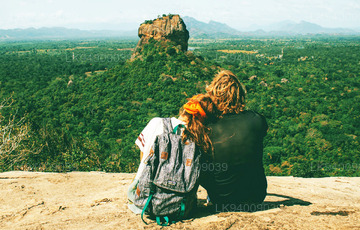
Tantirimale City
Tantirimale is located 36 km northeast of the city of Anuradhapura in the north-central dry plains of Sri Lanka.
Reaching Tantirimale
The Tantirimale monastery can be reached via the Anuradhapura – Mahavillachchiya road. 27 km along this road is Sri Wimalagnana road which is to the right. Tantirimale is located another 18km onwards after this turn. The motor road from Anuradhapura has made Tantirimale a popular place of pilgrimage among the Sinhalese Buddhists of Sri Lanka.
Tantirimale Ancient Monastery
The Tantirimale monastery is a vast panoramic site having extensive boulders spreading over 250 acres in the midst of thick forest covers. The climb and the walk around the caves and restored ruins is a pleasant experience. Walking to the right and reaching the top of the rock, we come to the “Bodhi tree”, one of the first eight offshoots of the original Bo-sapling brought to Sri Lanka during the time of King Devanampiyatissa in the 3rd Century BC.
The Dagoba
It is not known of the existence of a dagoba at the monastery during ancient times. The small modern dagoba on the summit of the largest and highest rock at Tantirimale was built in the year 1976. Walking to the left of the dagoba, one reaches the newly-built Image house. An evening stroll around the Tantirimale complex is a satisfying and peaceful experience.
Tantirimale Monastery Ruins
The reclining Buddha statue carved on the northern slope of the rock is 45 feet in length while the sedentary Buddha statue carved into the rock face is 8 feet in height.
Stone pillars in front of the sedentary statue indicate that once a roof had sheltered the statue. Scattered around the site are pillars and stones, some are carved and others which are rough seem to lie where those were queried. The flight of stairs, the unfinished images of deities on the rock surface has made archaeologists believe the monastery had been abandoned by the residents and the craftsmen in haste.
Bathing Pond
Behind the image is a dragon arch and descending from there at a fair distance is a pond, according to the villagers, that never runs dry. Closer to the bathing pond is a cluster of caves of which one had been made use as a library. Inscriptions in Brahmin script are found within the caves. A stone structure therein appears to be that of a building that once had been used for rituals.
Pre-historic drawings of two caves near the Tantirimale Monastery The caves at Tantirimale had been inhabited prior to the recorded history of Sri Lanka. In two of the rock caves are Palaeolithic cave paintings discovered by John Still in 1910. The discovery was published in the Journal of the Royal Asiatic Society (C.B.), vol. xxii-vol. xxix.
The first cave is 6.50 meters wide and extends up to 3.75 meters in height while the second cave is 3.60 meters in width and 3.70 meters in height. Some of the primitive drawings therein were done by Aborigines of Sri Lanka called “Veddah” while the rest had been drawn by the Megalithic man during the pre-historic period.
History of Tantirimale
Tantirimale, the main junction along the road from Mantota (Mannar, the former harbor to the north of the Island) to Anuradhapura, during the period of King Devanampiyatissa, was one of the first colonies of the Aryan Sinhalese who arrived from East India in 543 BC. The historical chronicles of Sri Lanka records, that when the Bo-sapling was brought from India to Sri Lanka by the Buddhist nun Theri Sanghamitta, “the village of the Brahman Tivakka” was one of the places where the foreign delegation and the local royal group rested on their way to Anuradhapura. As a token of appreciation of the hospitality of the Brahmin, an offshoot of the Bo-sapling was presented to him.
Since then, Tantirimale had been a Buddhist monastery for centuries. The golden era of Tantirimale was during the 7th and 8th centuries. Then the monastery was destroyed by the marauding Dravidian invader Kalinga Maga from Southern India on his way from Mantota towards Anuradhapura. Judging from the unfinished works of stone carvings at Tantirimale, it can be concluded that all the peasants and craftsmen had fled the village and the monastery during the invasion by the marauder.
Rediscovery of Tantirimale
In the year 1960, a 23-year-old Buddhist monk from the neighboring Ulukkulama Village by the name of “Kudakongaskada Vimalagnana Thero” took upon himself to have the villagers from the surrounding areas settled at Tantirimale with a view to protect and develop the sanctified pilgrimage site. When Tantirimale was re-discovered by Ven. Kudakongaskada Vimalagnana Thera, the reclining statue, and the Samadhi statue were severely damaged by the treasure hunters who had burrowed and mined into the ruins in search of treasures. Although the Samadhi statue is now restored, the attempts to restore the reclining statue since 1974 by the Department of Archaeology of Sri Lanka haven’t been satisfactory. The Bo tree that exists to date at the monastery is the most sanctified object of veneration at Tantirimale.







